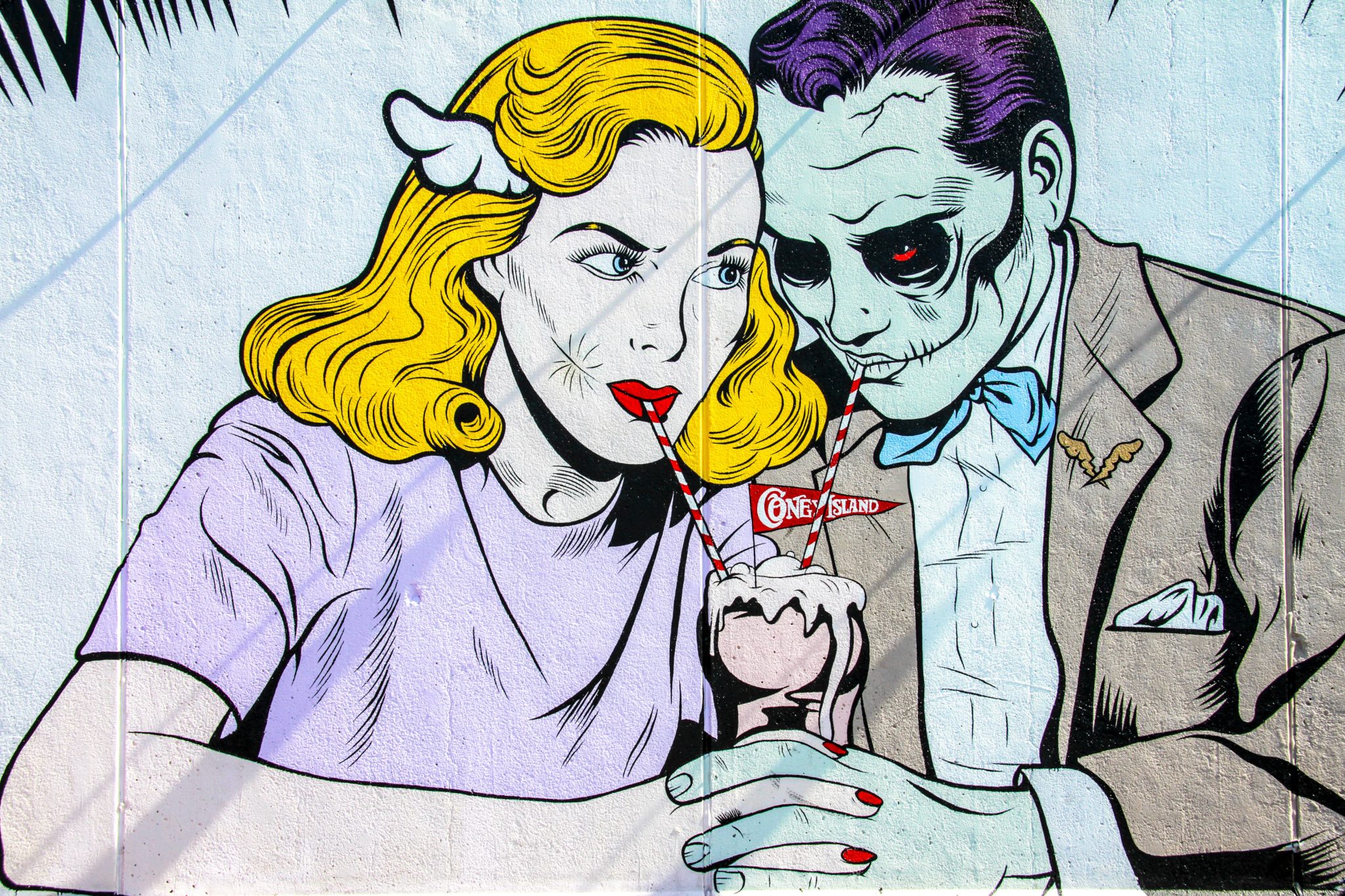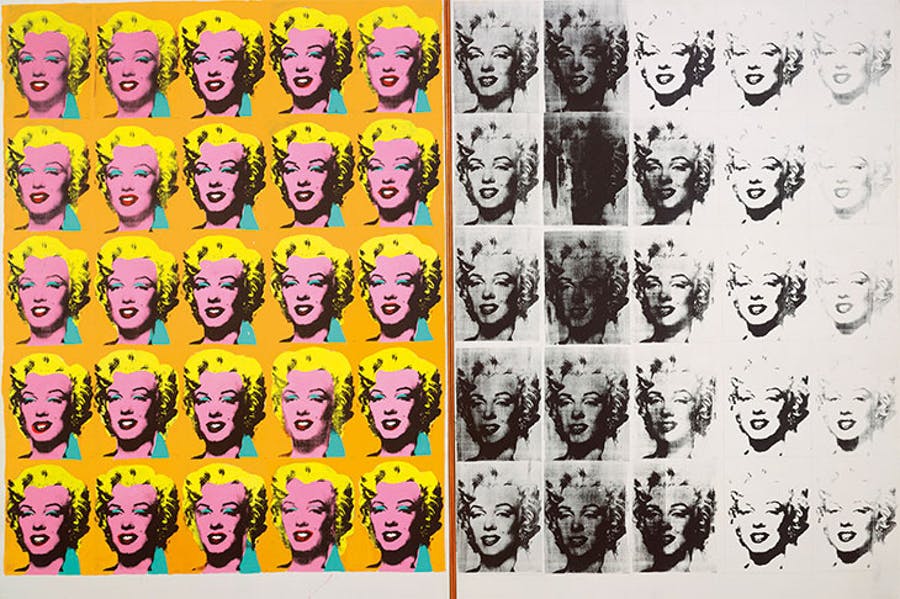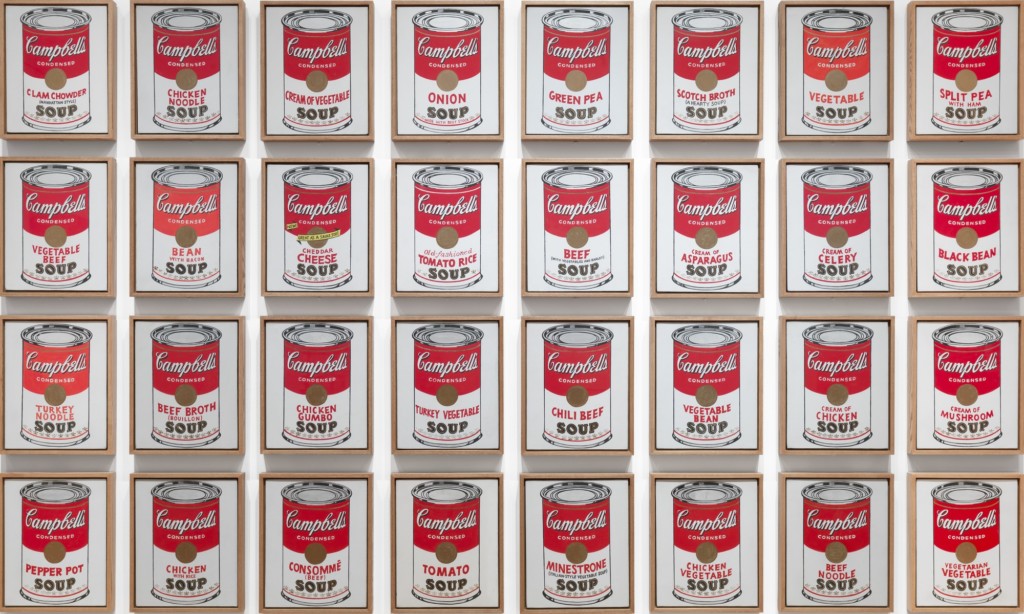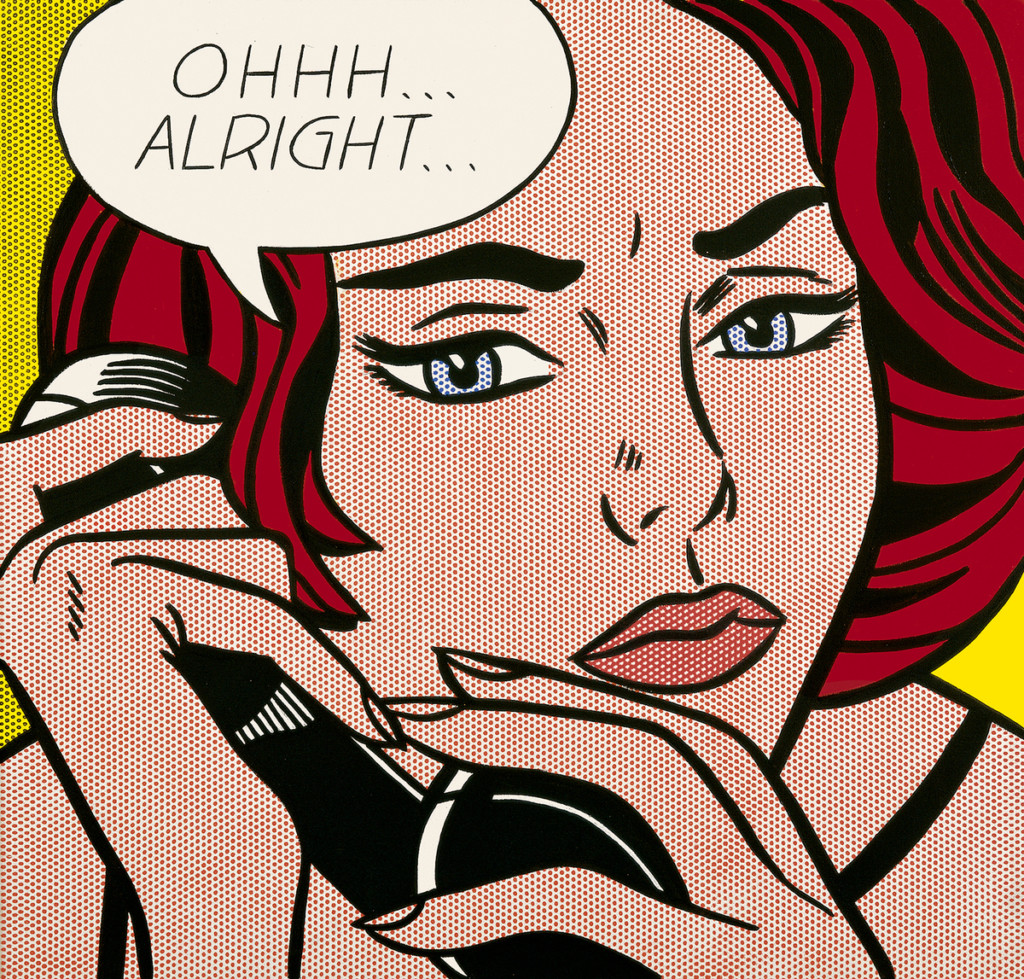How Was the Above Image Culturally Relevant of the Pop Art Style?

Fine Arts in Focus: What Puts the Pop in Pop Art?
Y'all've probably seen Andy Warhol's neon painting of Marilyn Monroe, called the Marilyn Diptych. While this artwork is considered a classic example of Pop Art, what makes it Pop Art?

Image courtesy of Apollo Mag
For starters, Popular Art emerged simultaneously in the Us and the United Kingdom during the late 1950s. The Pop in Pop Art stands for popular, and that give-and-take was at the root of the fine arts motility.
The master goal of Pop Art was the representation of the everyday elements of mass culture. Every bit a result, celebrities, cartoons, comic book characters, and bold primary colors all featured prominently in Pop Art.
Of course, it takes more than that to exist Pop Art. Below are other essential elements of the genre, including:
Cultural Kitsch
Cultural kitsch is common, campy, and cute. "Kitsch" tin can be a little hard to define, just it generally describes things that are tacky and mass-produced.
Kitsch was well-represented throughout the Pop Art move, merely i of the all-time examples is Andy Warhol's Campbell'southward Soup Cans.

Image courtesy of the Museum of Mod Fine art
Easily Recognizable Imagery
In a way, Pop Art was a reaction to its predecessor, Abstruse Expressionism. Different Abstract Expressionism, Pop Fine art depicted people or objects that viewers instantly knew, similar road signs or the to a higher place soup cans.
Equally a event, even at first glance, at that place was no question about what people were looking at in Pop Fine art pieces. In fact, this leads us to our adjacent signal: iconography.
Iconography
Common cultural icons taken from tv, movies, advertisements, comic books, and magazines were a hallmark of Pop Art. For instance, Roy Lichtenstein's Ohhh… Alright… uses comic book elements to convey its message.

Image courtesy of NPR
Other than Hollywood stars similar Marilyn Monroe, vehicles such as the large-finned Cadillacs of the late 1950s and Volkswagen buses of the 1960s were also among the favorite subjects of Pop Fine art artists.
Iconoclasm
Iconoclasm refers to the devastation of established imagery used in social and political contexts.
Pop Art was a significant move away from "loftier art" and the implied superiority of Abstract Expressionism. Many artists in the Popular Art move actually thought Abstruse Expressionism was pretentious.
Therefore, they sought to smash popular icons by appropriating or repurposing them.
Inclusiveness
By drawing upon images from the cultural mainstream, Pop Fine art established itself every bit the art of the people. Its fans claimed that anyone could appreciate and understand Popular Art, regardless of whether they had a fine arts degree.
Irony
Lastly, the Pop Art motility was nil if not ironic, a quality that many of its detractors didn't understand. What made Pop Art ironic was how it transformed mundane, everyday items into fine art.
Who Put the Pop in Popular Art
Although many artists participated in the Pop Fine art motion, we've decided to highlight 3 special visionaries who went on to define the move.
Andy Warhol
Naturally, Andy Warhol is a must-know. Warhol originally pursued a fine arts degree to work in commercial illustration, but moved on to painting subsequently in life.
Warhol's Pop Art work spanned a variety of mediums, including silkscreening, painting, motion-picture show, and multimedia. Shoes, Campbell's soup, and Marilyn Monroe are among his mutual themes.
Roy Lichtenstein
On the other hand, Roy Lichtenstein was inspired by classic American comic strips. Similar Warhol, once Lichtenstein earned his fine arts degree, he worked for several years before creating piece of work that would spark the Pop Fine art movement.

Lichtenstein's most expensive piece, Masterpiece, featured comic volume staples such as speech communication balloons and sold for $165 million dollars in 2017.
Corita Kent
Finally, we can't exit out Sis Mary Corita Kent.
Kent was a Roman Catholic nun and social activist who too favored silkscreen printing. Balancing her fine arts studies with her religious duties, Kent created art promoting peace and love while decrying acts of injustice.
Her works include the 1985 'Honey' postage stamp, protestation fine art of the 1960s, and over 800 individual silkscreen pieces of activist art.
Diving Deeper Into the World of Fine Arts
Though Pop Art has its roots in the '50s and '60s, its impact is still felt today.
If yous're curious well-nigh other Popular Fine art creators or the movements that Pop Art eventually inspired, pursuing a fine arts degree could assist y'all grow your interest into something more.
To acquire how Academy of Fine art University can support y'all on your journey, asking information today.
Source: https://blog.academyart.edu/fine-arts-in-focus-what-is-pop-art/
0 Response to "How Was the Above Image Culturally Relevant of the Pop Art Style?"
Post a Comment